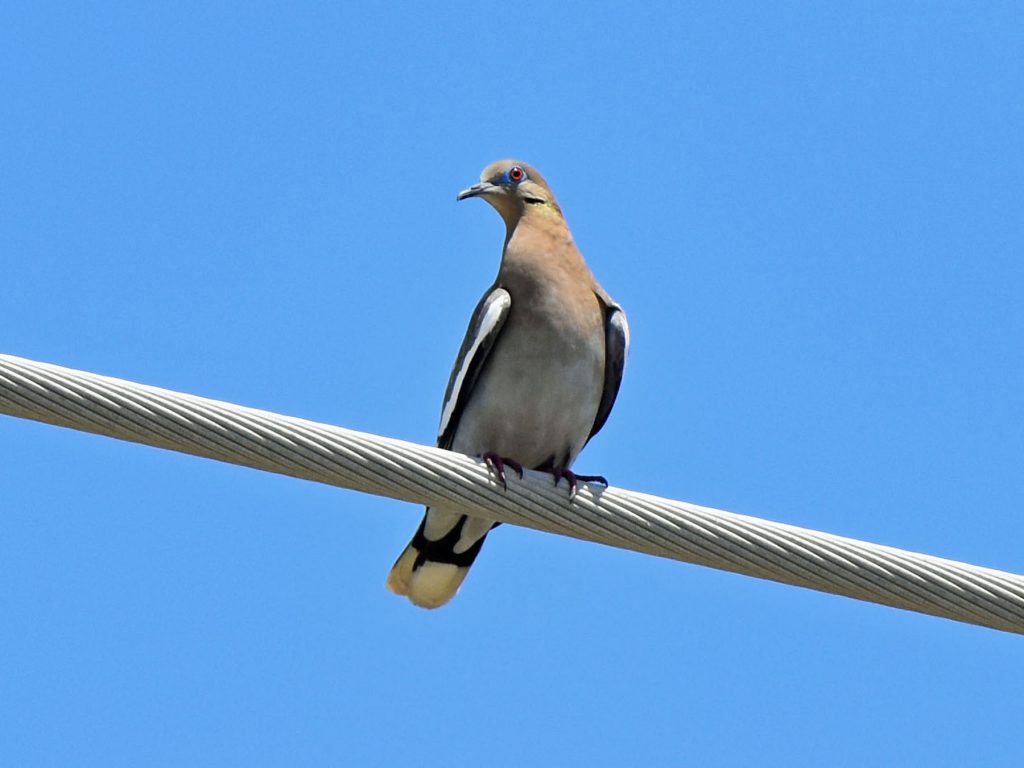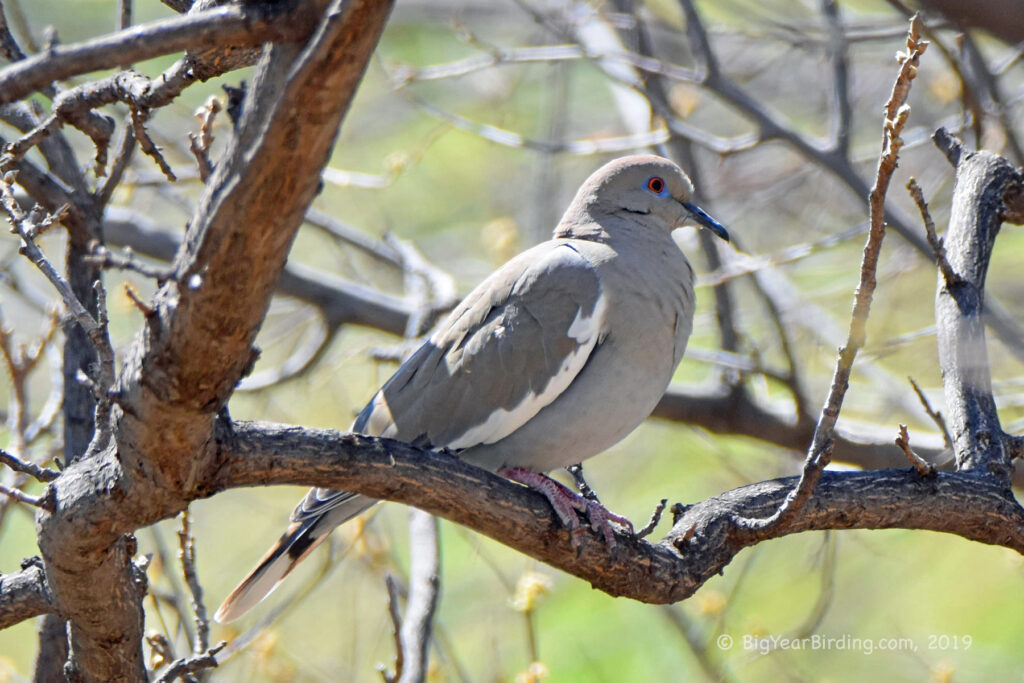
The White-winged Dove (Zenaida asiatica) is a medium-sized bird that measures around 11 to 12 inches in length, with a wingspan of approximately 17 inches. It weighs between 4.2 to 6.5 ounces, with males being slightly larger than females. This species has a distinctive appearance with white wing patches that are visible when it is perched, which is its most prominent distinguishing field mark.

White-winged Doves are primarily found in the southern United States, Mexico, and Central America. During the breeding season, they can be found in Arizona, Texas, and southern California. They are also known to breed in parts of Mexico, including the Yucatan Peninsula. During the non-breeding season, they can be found throughout much of Mexico, as well as parts of Central America.

In terms of behavior, White-winged Doves are generally non-migratory, but they may move short distances in response to changing food and water availability. During the breeding season, they are typically found in pairs or small groups, but they may gather in large flocks during the non-breeding season. They are primarily seed eaters, but they may also eat insects and fruit.
Apart from the white wing patches, White-winged Doves have a gray-brown head, neck, and upper breast, with a pale blue-gray crown and nape. The back, wings, and tail feathers are brownish-gray, and the underparts are pinkish-brown. The bill is black and the legs and feet are pinkish-red. Males and females are similar in appearance, but males may have slightly more iridescent feathers on the neck and upper breast.

Overall, the White-winged Dove is an interesting bird that can be easily identified by its distinctive white wing patches. It is primarily found in the southern United States, Mexico, and Central America, and is generally non-migratory. This species primarily feeds on seeds, but may also eat insects and fruit. If you are interested in birdwatching or want to learn more about this fascinating species, be sure to keep an eye out for the White-winged Dove.
